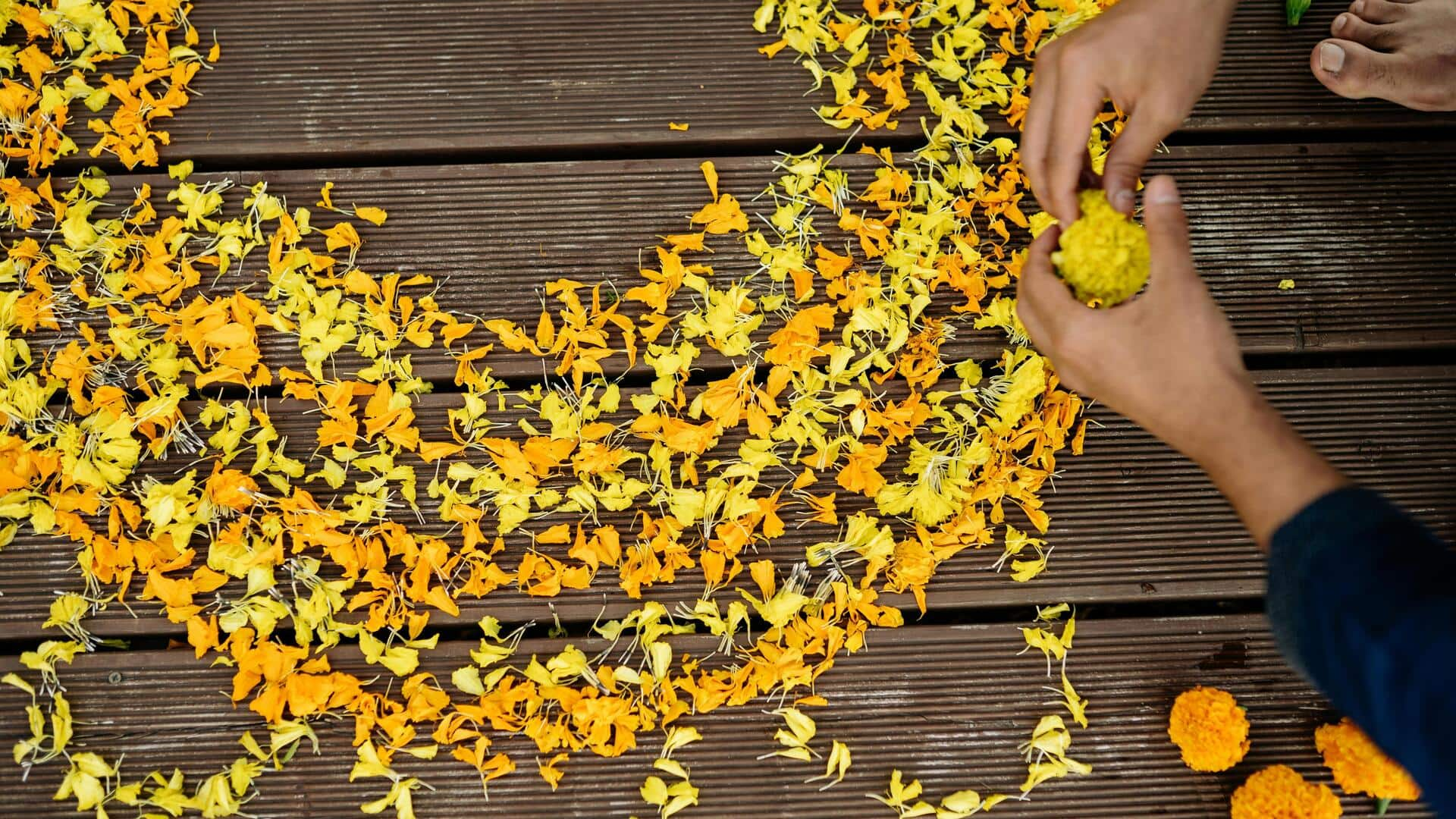
Discover the beauty of Indian floor mandalas
What's the story
Indian floor mandala art is a culturally rich and intricate form of artistic expression. Traditionally, this art has been used to decorate homes and public spaces during festivals and special occasions. It involves creating geometric patterns, often with symbolic meanings, using natural materials like rice flour, colored powders, or flower petals. The art form is not just visually appealing but also holds spiritual significance in many Indian traditions.
#1
Historical significance of Mandalas
Mandalas have been a part of Indian culture for centuries. They were used in ancient rituals and ceremonies to represent the universe. The word "mandala" comes from Sanskrit, meaning circle, which represents wholeness and unity. Historically, these designs were used in temples and sacred spaces to guide meditation and spiritual practices.
#2
Materials used in mandala creation
Traditionally, Indian mandalas are made with natural materials like rice flour, which is easy to draw intricate patterns. Colored powders add vibrancy to the designs, while flower petals give texture and fragrance. These materials are easily available and eco-friendly, making them a sustainable choice for artists.
#3
Techniques for creating mandalas
Creating a mandala requires precision and patience. Artists start by outlining the basic shape with chalk or charcoal on the ground. They then fill in the details using the chosen materials, often working from the center outward to maintain symmetry. Each pattern is carefully crafted to ensure balance and harmony within the design.
#4
Cultural variations across India
Different regions in India have their own unique styles of mandala art, influenced by local customs and traditions. In some areas, floral motifs are common, while others may have geometric shapes or mythological figures. Each variation offers a glimpse into India's diverse cultural heritage while keeping the essence of this traditional art form alive.